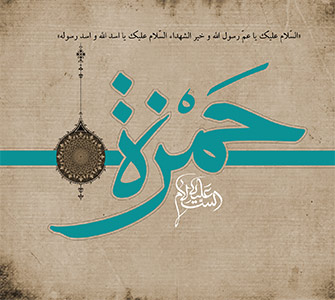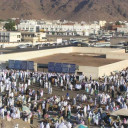Translators' Introduction
- Details
- Hits: 16650
Translators' Introduction
--------------------------------------------------------------------------------
In the Name of Allah
The Disciplines of the Salat (The Islamic Prayer), which was finished on Monday, the 2nd of Rabi'uth-thani, 1361 L.H. [Lunar Hijri Year] (30th of Farwardin, 1321 S.H. [Solar Hijri year]), is a detailed explanation of the Salat's strict disciplines and moral secrets. Three years before the writing of this work, the Imam (S) [salamullahi 'alayh = may Allah's peace be upon him] had written a book under the title: The Secret of the Salat, which contained the same concepts, but it was concise and in the terms of the elect gnostics [1]. Nevertheless, the late Imam, believing that more people should benefit from the subjects of the book, set upon writing this book in a simpler language. He says:
"Before this, I prepared a paper in which I wrote on the secrets of the Salat as much as was feasible. But as it was not suitable for the common people, I decided to write parts of the cordial disciplines of this spiritual ascension, so that my brothers in faith may have a remembrance, and my hard heart may be affected by it."
Formerly, the folds [matawi] of the book Adabus Salat, with explanations and revisions, had been published under the title: Flying in the Heavenly Kingdom. Then the book itself was published. The former editions, however, were not agreeable, for some reasons. One of the reasons might probably have been the lack of a manuscript. Therefore, The Institute for Compilation and Publication of Imam Khomeini's Works set forth to publish this work, with complete precision, faithfulness, and reference to the available copies, and collating them with the original MS (manuscript) copy which is within the reach of this Institute.
The book includes two prefaces, which the Imam wrote in 1363 S.H., dedicating this work to his respected son, Hujjatul Islam wal Muslimin, Haj Sayyid Ahmad Khomeini, and to Mrs. Fatimah Tabataba'i (wife of Haj Sayyid Ahmad Khomeini).
This edition is accompanied by footnotes and explanations, in which the sources and the references of the hadiths and statements are stated, and the Arabic texts are translated. All these marginations -except a few which the Imam himself had written down and are marked by an asterisk (*) (in the Persian copy) -as well as the different indexes of the book, have been prepared and arranged by this Institute. [2]
Certain Islamic and gnostic terms have been printed in italics or in black (beside the titles of the books). Some of these terms have been explained in English in the GLOSSARY at the end of the book.
A thousand copies of the first edition of the book (in Persian) are accompanied with the photostatic copy of the complete MS (manuscript) to be sent to the libraries and those interested in keeping specimens of the Imam's handwritten works. Other copies include only a printed sample of the MS.
We cordially thank the management and the staff of The scientific and Educational publishing Co. for the help they accorded us.
Sending our greetings to the late Imam, we pray Allah, the Great, to bestow upon us His help to be more Serviceable to Islam.
The Institute for Compilation and Publication of Imam Khomeini' Works
(International Affairs Department)
Notes:
[1]. The complete and revised text of The Secret of the Salat, including its photostatic copy, comments and different indexes, has already been published by this Institute.
[2]. The numbers at the (left) side of the printed pages (of the Persian text) represent the numbers of the MS (manuscript) pages which are the same as those of the printed pages. We draw the attention of the respected readers of the Persian text to the fact that the Imam, by oversight, had repeated the two page-numbers 172 and 278, and next to the number 263 he had written 267. We could have renumbered them correctly on the printed pages (of the Persian text), but as this would have made it a bit difficult to find the MS's page numbers, besides the fact that the readers might, during their reading of the book, forget this warning and get lost in finding out a particular page of the MS, therefore, we had but to retain the same numbering on the printed pages (of the Persian text) as are on the Imam's hand-written pages. That is, the numbers 172 and 178 were repeated, and after the number 263 comes number 267.

































